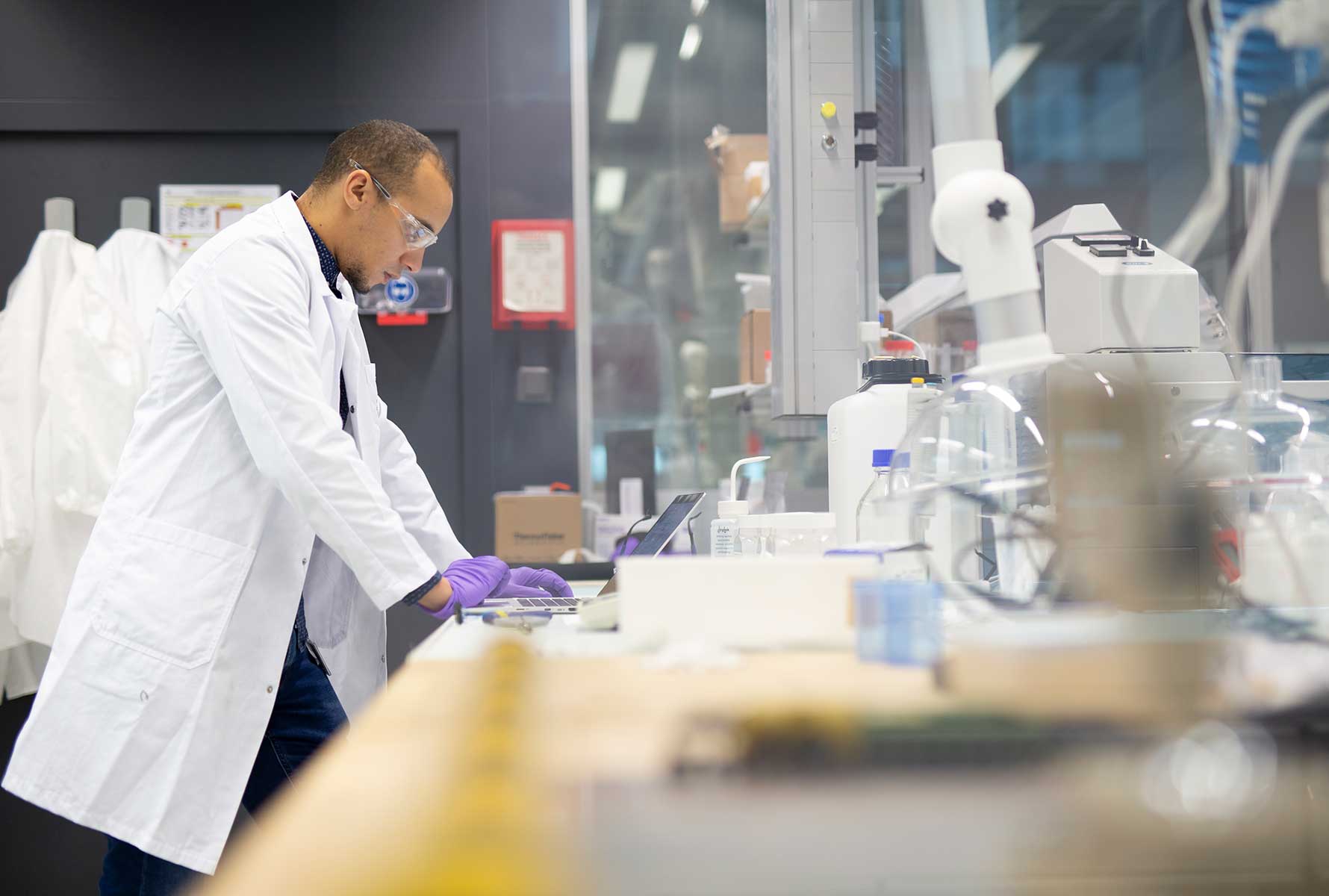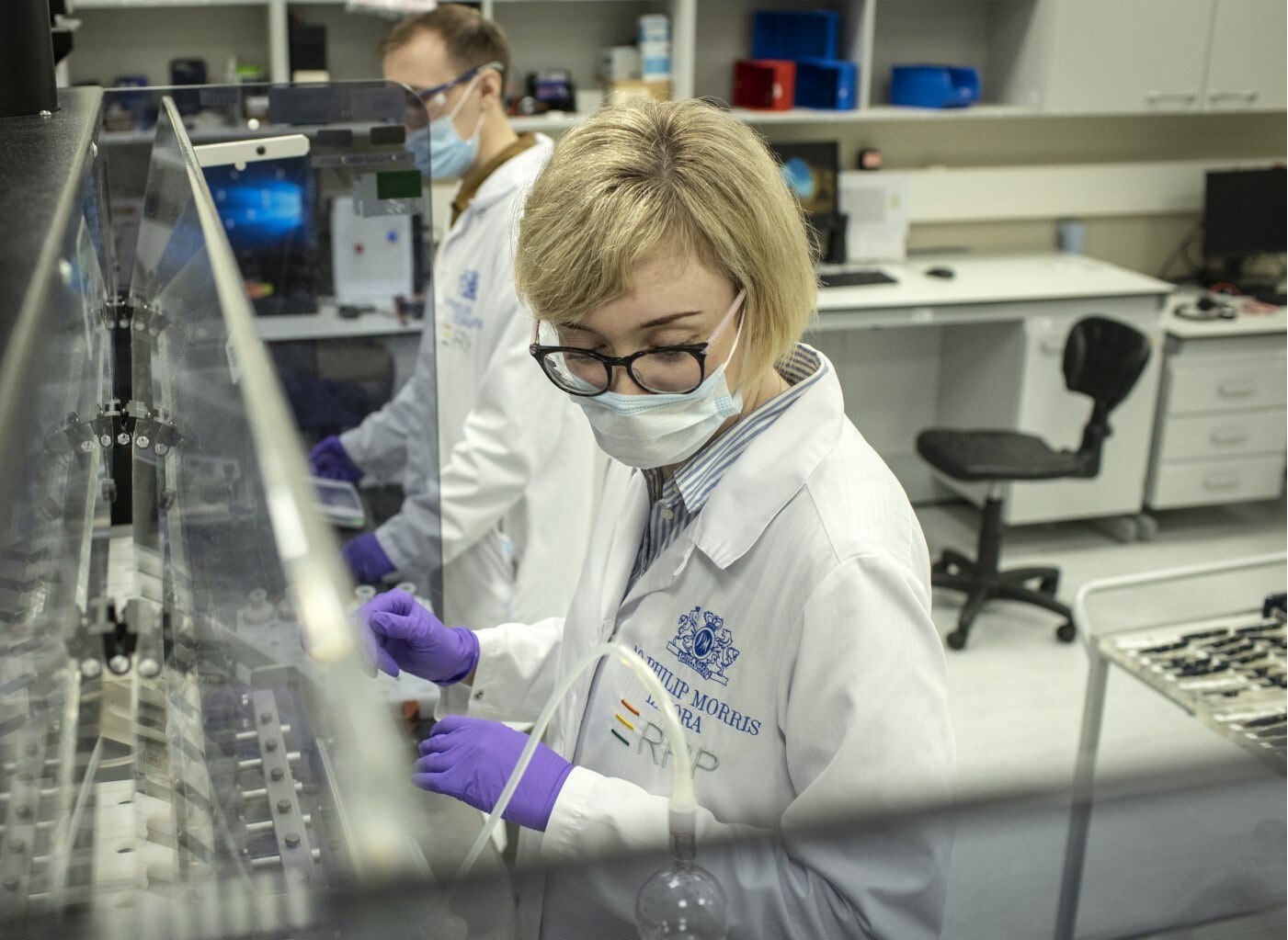| INTEGRATED REPORT 2020 |
The vast majority of HPHCs are emitted as a result of burning (combusting) tobacco. We have therefore developed, and continue to refine, a portfolio of products that deliver nicotine without combustion—smoke-free products. While not risk-free, these products are a far better choice than continuing to smoke.
Topic description
Reducing the health risks associated with the use of our products.
The business case
The future of the nicotine industry is unarguably
in smoke-free products, which are experiencing rapid growth. Through our early and sustained investment in R&D, and consequent leadership in technology and innovation, we have built a very strong position. As of year-end 2020, our R&D work and its associated innovations have resulted in 1,300 patents granted for smoke-free technologies by the five largest intellectual property offices in the world (IP5); moreover, in 2020, we held over 80 percent of the international heated tobacco category and over half of the overall smoke-free category (as compared with our cigarette volume share of 25.7 percent), excluding China and the U.S.
Product health impacts is a tier 1 topic within our strategic pillar Innovating for better products.
Heated tobacco consumables also have higher revenues and gross unit margins per pack compared with cigarettes, and as scale increases, we are also driving significant operating income margin expansion as we generate operational leverage on our ongoing development, device, and commercial infrastructure costs, and realize digital efficiencies.
Through growing this business as fast as possible, and adult smokers fully switching to our smoke-free products, we aim to capture more overall market share at superior margins and deliver strong organic growth in net revenues and adjusted diluted earnings per share (EPS). This provides attractive returns on our significant upfront and ongoing investments in developing the category, with USD 8.1 billion invested since 2008 in the development of scientifically substantiated, commercially viable smoke-free products such as IQOS.
Achieving our aims
The principal source of smoking-related diseases is known: The burning of tobacco emits the vast majority of the harmful chemicals that are found in cigarette smoke. By avoiding combustion, we reduce or eliminate the formation of harmful and potentially harmful constituents (HPHCs). Through substantial investment in R&D, we have developed products that provide the enjoyable experience of consuming nicotine and flavors without burning tobacco.
Two fundamental principles guide the scientific assessment of smoke-free products:
In line with those two principles, our assessment program aims to compare health outcomes of switching to smoke-free products with both ongoing smoking and cessation.
We implement a rigorous scientific assessment
program aligned with the U.S. FDA’s draft guidance on modified risk tobacco products (learn more about how we conduct our R&D here and on the PMI Science website). In addition to aerosol chemistry, non-clinical, and clinical studies, our assessment program includes consumer behavior studies in order to minimize the use of our smoke-free products by unintended audiences, such as former smokers, never smokers, and youth. In addition, following market launch, we continuously monitor the safety profile of our smoke-free products to ensure that any new or different health risks associated with their use can be identified in a timely fashion, if they occur, and can be managed appropriately. We do this by improving our products and updating user information. We also produce and share with regulators—including the U.S. FDA—annual safety update reports, which include notifications received directly from consumers.
Science and technology can help society make significant strides in our collective efforts to address the world’s most pressing problems. Giving facts and evidence greater prominence in policymaking—over ideology, politics, and unsubstantiated beliefs—will help match the public’s expectations for science to sit at the heart of decisions impacting them and their future.
Dr. Moira Gilchrist
PMI Vice President, Strategic & Scientific Communications
Our two main R&D centers, located in Switzerland and Singapore, employ hundreds of scientists, engineers, and other experts working to develop and assess smoke-free products. This work is headed by our Chief Life Sciences Officer, Chief Product Officer, and Chief Consumer Officer, who are members of PMI’s Company Management.
In 2020, PMI allocated 99 percent of its R&D budget of USD 495 million to its portfolio of smoke-free products. This includes costs related to clinical studies, the development of machinery and prototypes, and product acceptability testing. The remaining one percent of our expenditure is largely related to regulatory compliance requirements for our combustible tobacco products.
This online content about our Integrated Report should be read in conjunction with PMI’s 2020 Integrated Report. The information and data presented here cover the 2020 calendar year or reflect status at December 31, 2020, worldwide, unless otherwise indicated. Where not specified, data come from PMI estimates. Please also refer to 'About this report' on page 3 of the 2020 Integrated Report for more information. Aspirational targets and goals do not constitute financial projections, and achievement of future results is subject to risks, uncertainties and inaccurate assumptions, as outlined in our forward-looking and cautionary statements on page 145. In the 2020 Integrated Report and in related communications, the terms “materiality,” “material,” and similar terms, when used in the context of economic, environmental, and social topics, are defined in the referenced sustainability standards and are not meant to correspond to the concept of materiality under the U.S. securities laws and/or disclosures required by the U.S. Securities and Exchange Commission.







